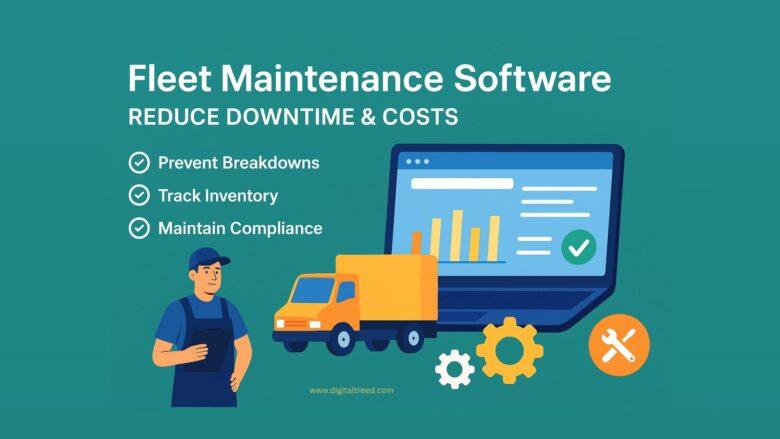No one likes surprises when managing fleet operations—especially the kind that involve broken-down vehicles, late deliveries, or costly repairs. If you’ve ever scrambled to find a replacement truck or juggled invoices from a last-minute tow, you know the pain. The good news is that you can take the guesswork, and a lot of the stress, out of fleet maintenance. Whether you’re managing five vehicles or five hundred, the right tools can help you stay ahead of the curve. And that’s where fleet maintenance software comes in.
Less Guesswork, More Control
Fleet operations move fast. Vehicles are constantly on the road, clocking miles, taking wear, and pushing limits. Trying to manage maintenance manually across five different spreadsheets gets chaotic quickly. With fleet maintenance software, everything lives in one place. You know exactly when each vehicle is due for service, can track issues as they’re reported, and don’t have to rely on memory or handwritten notes to keep things running smoothly. It’s not just about convenience—it’s about reducing the surprises that throw your day and budget off track.
Prevent Problems Before They Start
Preventive maintenance isn’t just a nice idea; it’s essential. Every skipped oil change or delayed inspection increases the risk of something bigger and pricier breaking later. The software helps you schedule tasks based on mileage, engine hours, or time. No more digging through logs or missing deadlines. And when maintenance happens on time, vehicles last longer—and so does your budget. You wouldn’t drive your car 50,000 miles without changing the oil. Your fleet deserves the same care, just on a larger, more organized scale.
Fast Fixes = Lower Downtime
Even with the best planning, things break. But when a breakdown happens, your ability to respond quickly makes all the difference. Instead of texting three people to figure out what’s going on or chasing paperwork, your team can log the issue, assign a repair, and track progress in real time. Everyone stays in the loop. There’s no wasted time and no guessing who’s doing what. The faster you fix things, the sooner that vehicle gets back to work.
Fewer Costly Surprises
Dealing with unexpected repairs and frequently shipping parts overnight can be expensive. Good software gives you insight into patterns. If a certain make or model is constantly in the shop, or if brake pads are wearing out faster than expected, you’ll see it. This visibility helps you make smarter calls, like replacing parts early, switching vendors, or adjusting schedules. That’s how you shift from reactive to proactive and save serious money in the process.
Stay on Top of Inventory
It can be frustrating if a repair stalls because someone couldn’t find the right part, or worse, it wasn’t even in stock. With integrated parts tracking, you always know what’s on hand. You can set alerts for low inventory and reorder before you run out. Some systems even let you assign parts to specific work orders, so nothing gets lost or double-used. Think of it as having a digital toolbox that never runs empty— it tells you what’s missing before it’s a problem.
Keep Everyone Accountable
Fleet maintenance isn’t just the mechanic’s job. Drivers need to report issues, managers need visibility, and leadership needs to know the system’s working. With software, you can see who completed which tasks and when. Every inspection, every repair, and every log entry is tracked automatically. This kind of accountability leads to better habits, which in turn leads to reduced downtime and more reliable service.
Make Compliance Easier
Inspections, safety checks, and compliance reports might not be thrilling—but they are mandatory. They can become a nightmare during audits if you’re not organized. With digital records, everything’s stored and searchable. You can easily prove a vehicle passed inspection last quarter and show proof of regular servicing. Staying compliant becomes part of your routine, not a scramble when someone’s knocking on your door.
Conclusion
Fleet maintenance doesn’t have to feel like a fire drill. With the right systems in place, you can stay ahead of breakdowns, reduce waste, and get the most from every vehicle you own. Fleet maintenance software isn’t just about organizing your data—it’s about turning that data into decisions that save time, money, and frustration. Whether you’re trying to keep a small fleet in top shape or juggling a larger operation, investing in smart tools pays off quickly. So, if you’re still relying on sticky notes and gut instincts, it might be time to shift gears.

Leave a Reply